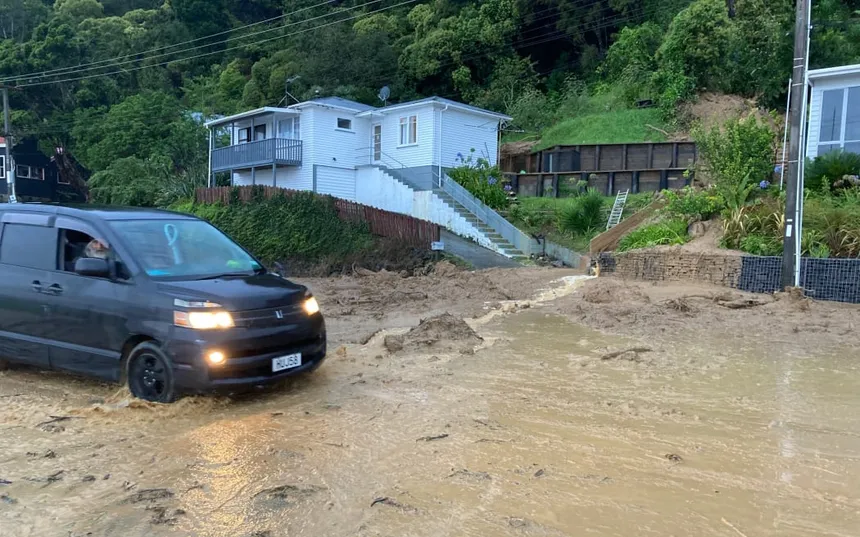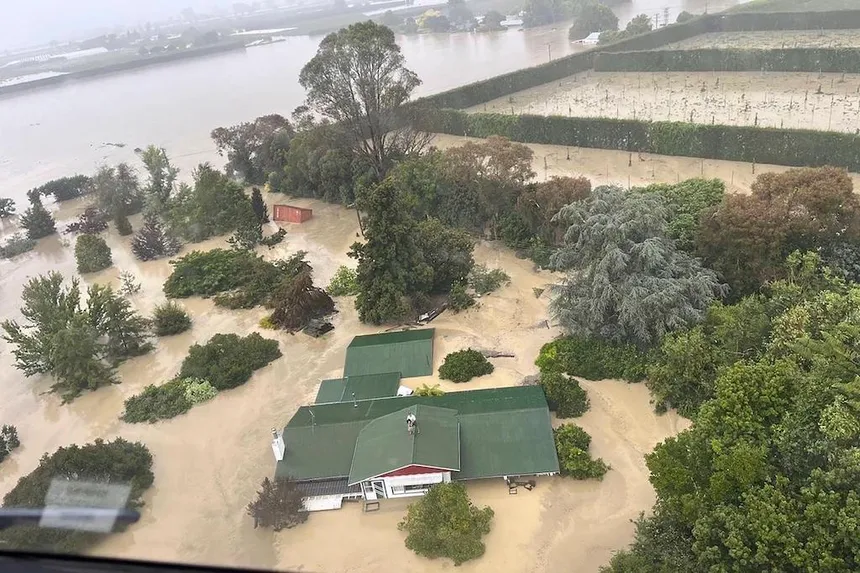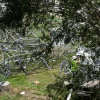New Zealand has declared a national state of emergency as Cyclone Gabrielle wreaks havoc across the country, causing widespread destruction and displacing thousands of people. The prime minister, Chris Hipkins, described the storm as “the most significant weather event New Zealand has seen in this century,” with damage that has not been experienced in a generation. The scale of the disaster is still unfolding, but officials have confirmed that over 2,500 people have been displaced, with many more potentially affected.
Floodwaters have engulfed homes and buildings in some areas, including Hawke’s Bay, where people were forced to shelter on rooftops. Landslides have swept away homes and cut off state highways, making it difficult for emergency responders to reach affected areas. In Esk Valley, a 22-year-old woman had to climb out of her bedroom window and swim to safety as floodwaters rose, and her neighbors were trapped on their roof.
The East Cape region has also been severely affected, with floods carrying massive logs and sweeping away homes and farms. Farmer Bridget Parker described the destruction as “catastrophic,” with entire homes and properties lost. The cyclone has also left many regions completely cut off, making it challenging for officials to assess the full extent of the damage.

Prime Minister Hipkins emphasized that the recovery process will be lengthy, with some people potentially displaced from their homes for extended periods. He also acknowledged that the cyclone highlights the need for New Zealand to re-evaluate its building practices and adapt to the changing climate. Climate change minister James Shaw blasted parliament for “lost decades” of inaction on climate change, saying that the country must now act to mitigate its impact.
The cyclone has also disrupted communication networks, with parts of the country experiencing power outages and internet connectivity issues. Emergency workers are struggling to access affected areas due to unstable ground, floodwaters, and closed roads, making their job incredibly difficult. One firefighter remains missing after a landslide destroyed the house they were inspecting, and another is in critical condition.
As the country navigates the aftermath of this devastating event, officials are urging affected residents to prioritize safety and seek assistance if needed. It will take time to rebuild and recover from the destruction caused by Cyclone Gabrielle, but it is clear that this will mark a turning point in New Zealand’s approach to climate change and emergency response measures.

